This has been a crazy year. The temperatures in May seemed cooler than normal to me and it was relatively dry overall. I mean, we would get a gully washer of a storm, then nothing….. until another gully washer came. We definitely didn’t seem to get the frequent, gentle May showers that I tend to think of for May weather.
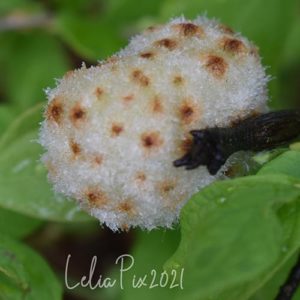
Maybe because it was so cool in late April and May, or maybe I just missed them, but I didn’t see our spring tree top flasher fireflies this year. Usually, by the end of April or first of May, the trees in our backyards are glowing with lightning bugs. But not this year. In fact, it was only within the last week or so that I’ve started seeing lots of fireflies and they are the big dippers – the ones commonly found in yards.
Are the Brood X periodical cicadas singing where you are? They didn’t emerge at my house. However, some did emerge at my mother’s house less than an hour away. Not many. Their songs aren’t anywhere near as deafening as in a typical emergence year. I half wonder if what she is experiencing isn’t one of those early emergences that Dr. Kritsky talked about in our podcast episode. There’s no good way to tell, but to me there just doesn’t seem to be “enough” for them to be part of the actual Brood X emergence.
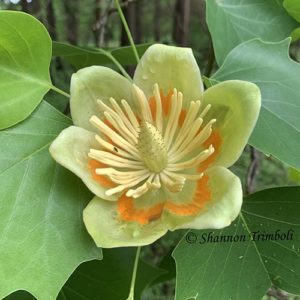
Over the last several weeks, I’ve made lots of interesting nature-related discoveries in my yard or community. Many of them, like with the fireflies and cicadas, I haven’t been able to document with photographs. Below are a few of the nature-related discoveries I’ve made recently that I was able to capture in a picture, along with a few others that were sent to me by family members.
Towards the end of April, a family member sent me a picture of something I had never seen before. I was immediately intrigued. Even more so when another family member shared one that he had found too. It took some digging, but eventually I identified it as a wool sower gall. It is made by the larvae of a tiny little wasp and almost always occurs on white oaks. (Apparently this one didn’t read the book, because it isn’t on a white oak.) The larvae secrete a chemical which causes the gall to form. If you zoom into the picture, you can see that the big puff ball seems to be made up of little puffs. That’s because it is. Each little puff contains its own individual larva that is developing into a wasp. You only find wool sower galls in the spring, they don’t do any real harm to the trees, and the wasps that come out of them don’t sting.
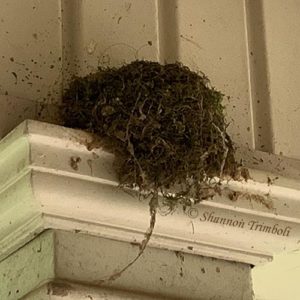
I always love it when the tulip poplars bloom each year. They provide lots of nectar and pollen for many different species of bees, beetles, and other pollinators. Despite their common name, tulip poplars are actually in the magnolia family, not the poplar family.
We are once again hosting an eastern phoebe nest on our front porch. I don’t know why, but they love our front porch. For the first few years that we lived here, they always built on top of one of the motion sensor lights on the front porch. When we changed the angle of the light, they moved to this column and that has been their preferred nesting site ever since. They’ll attempt at least one, if not two, clutches here every year and are usually successful with at least one clutch, and often times, both clutches. Unfortunately, it means I don’t get to sit on my porch swing much during the spring and early summer. I don’t want to disturb Mama and the babies too much.
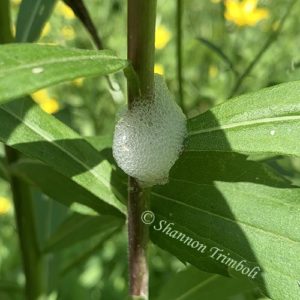
Over the last several weeks, I’ve noticed tons of spittlebugs in the fields. Spittlebugs are what makes those gobs of frothy, white bubbles on the stems of a plant. The spittlebugs themselves are the nymphs (babies) of a group of insects called froghoppers. (Don’t you just love their names?) Spittlebugs create the frothy bubbles to protect themselves from predators and to create a moist environment where they won’t dry out. If you want to learn more about spittlebugs, the Missouri Dept. of Conservation of Conservation has a great webpage about them.
The other day, Mom sent me the last picture that I’ll share with you in this article. Yep. Those are groundhogs. In a tree. She took the picture from her back deck and the limb that the groundhogs are on is easily 10-12 feet off the ground. A lot of people don’t realize that groundhogs (also known as woodchucks or whistle pigs) can climb trees. But they can. And these were feasting on yummy tree leaves.
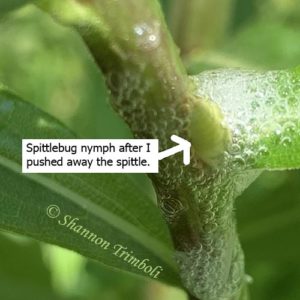
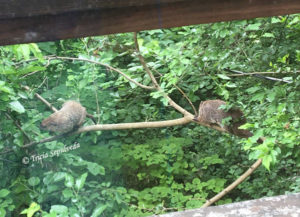
So, what interesting nature-related discoveries have you made in your yard and community over the last few weeks? I always enjoy hearing what others are finding too.

Backyard Ecology: Exploring Nature in Your Backyard
Nature isn’t just “out there.” It’s all around us, including right outside our doors. Hi, my name is Shannon Trimboli, and I am the host of Backyard Ecology. I live in southcentral Kentucky and am a wildlife biologist, educator, author, beekeeper, and owner of a nursery specializing in plants for pollinators and wildlife conservation. I invite you to join me as we ignite our curiosity and natural wonder, explore our yards and communities, and improve our local pollinator and wildlife habitat. Learn more or subscribe to my email list at www.backyardecology.net.

Leave a Reply